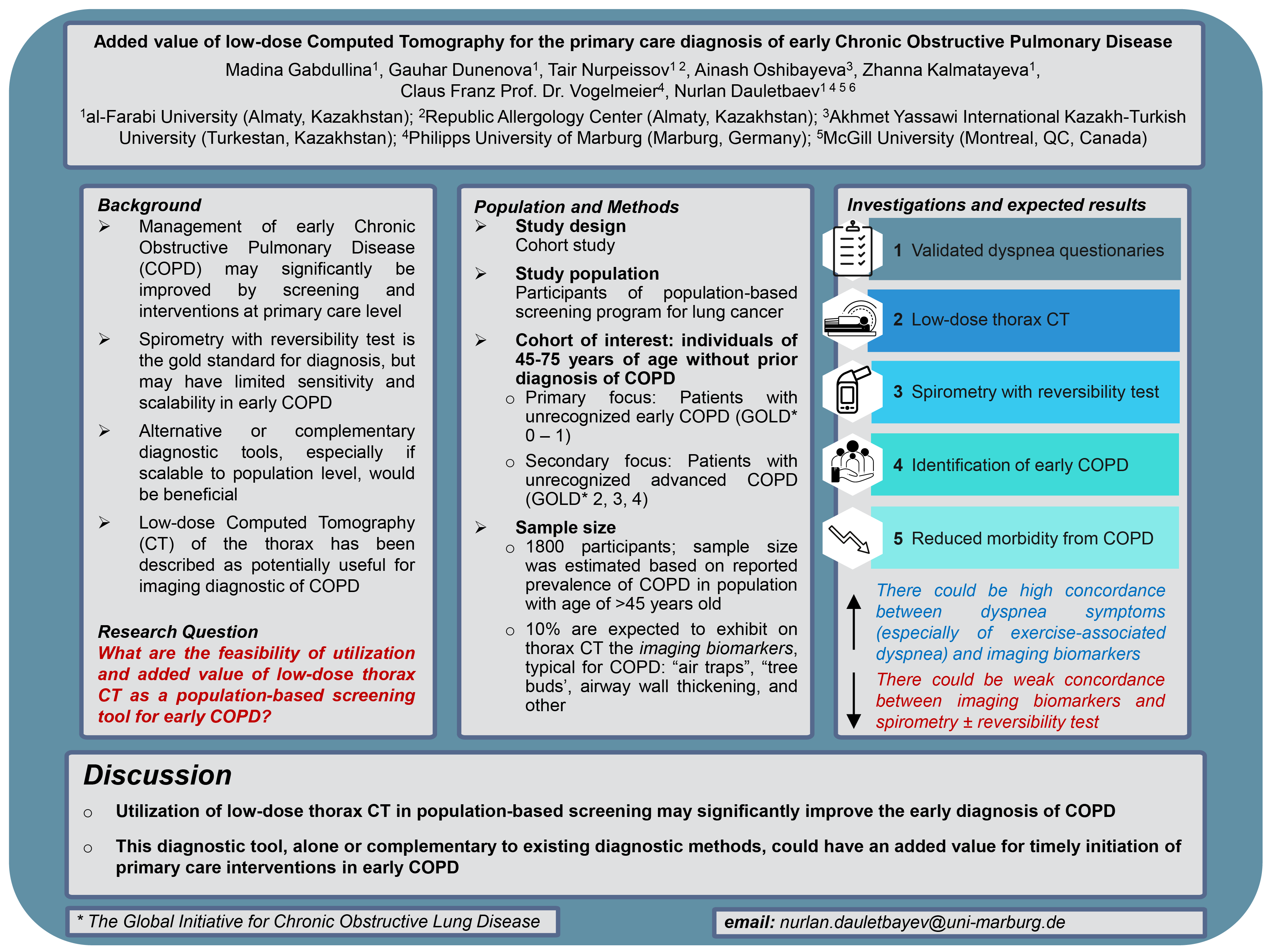SRFP004: Added value of low-dose Computed Tomography for the primary care diagnosis of early Chronic Obstructive Pulmonary Disease
Madina Gabdullina; Gauhar Dunenova, MD, MPH; Tair Nurpeissov, MD, PhD; Ainash Oshibayeva, MD, PhD, MSPH; Zhanna Kalmatayeva, MD, PhD; Claus Franz Prof. Dr. Vogelmeier, MD; Nurlan Dauletbaev, MD, PhD

Jack Westfall
jwestfall@aafp.org 11/21/2021Great poster and abstract. Thanks for sharing at NAPCRG